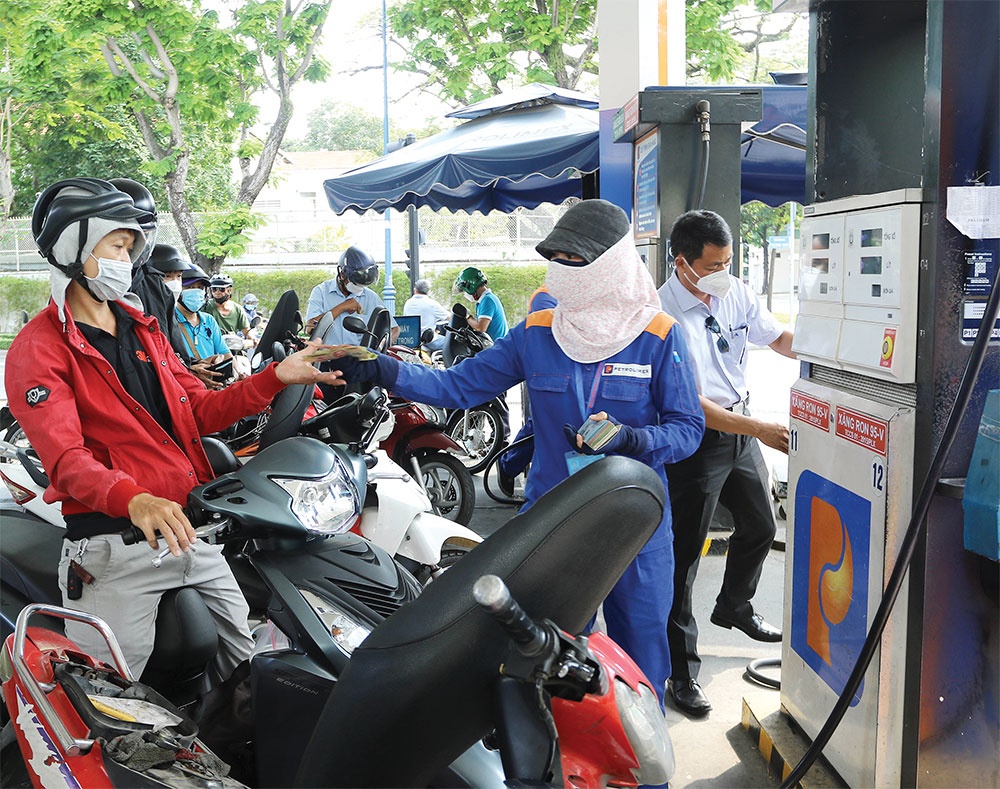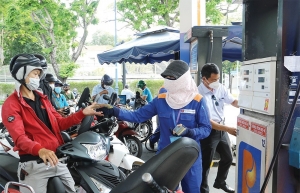Understanding global oil and gas sector management
With the current mechanism, the efficiency of enterprises largely depends on the price control agency, and conflicts between management agencies and enterprises always occur.
The fluctuating global oil price shows the inadequacies in the management of Vietnam’s petroleum market. Under normal operating conditions, there are no fluctuations in price and supply, and any limitations are less visible.
 |
| Volatility forces balancing act for Vietnam’s petrol market |
A survey by GlobalPetrolPrices about the petrol markets in 97 countries and territories showed that 23 of these applied a fixed-price model, 14 applied ceiling prices, and the remainder let the free market decide.
According to GlobalPetrolPrices, among the price-fixing countries are oil-producing countries such as Angola, Algeria, Kuwait, Azerbaijan, Indonesia, Malaysia, Vietnam, and China. In the EU, only Belgium applies a price ceiling. Most developed countries have free markets. Many oil-producing countries are not included in the survey because the governments subsidise fixed prices with very low retail prices.
In countries with free markets, state intervention is limited to ensure market transparency and free competition. Fuel retailers set their prices freely, so fuel prices at different stations and regions across the country can vary.
In countries with price ceilings, retailers are free to set the selling price, but must not exceed the specified price ceiling. They also have to compete on prices to sell more. The purpose of this form of price control is to protect consumers against sudden price fluctuations or unreasonably high market prices.
In the region, Indonesia is an oil producer that partially meets domestic demand like Vietnam. Since 2005, the Indonesian market is open to foreign retailers but still essentially has set prices with state subsidies.
Vietnam is managing the petrol market according to the provisions of Decree No.83/2014/ND-CP from 2014, as amended by Decree 95 from 2021 – this includes the production and trading of petrol and oil. Accordingly, the retail price must not be higher than the operating price announced by the state agency.
The base price to control the gasoline price is calculated depending on the source of import and domestic production. The Ministry of Industry and Trade and the Ministry of Finance have a role in determining the calculation of the base price. In case of major changes, it must be reported to the prime minister for consideration and decision.
In Vietnam’s petroleum market, enterprises are responsible for business efficiency, but the selling price of products depends on the management of state agencies. Petrolimex – which is financed roughly three-quarters through state capital – accounts for about half of the market share. PVOIL, its subsidiary, accounts for about a fifth of the market share.
When the market is stable, oil price management is not a big problem. However, when the market fluctuates abnormally, conflicts related to import prices, schedules, inventory, and the application of new prices always occur.
Thus, from the perspective of corporate governance, when managing the ceiling price, it is best to stipulate that the output selling price is added to the maximum of the input price. With the current mechanism in Vietnam, the profit and loss of enterprises largely depend on the prices decided and their application.
Vietnam can change the way it operates its petroleum market. For example, a business enterprise buys one million litres of gasoline per year at an average price of VND20,000 (87 US cents) per litre. The selling price adds VND6,000 (26 US cents) per litre, so the average maximum revenue is VND26,000 ($1.13) per litre.
If the revenue exceeds this figure, the state will collect the difference to use in the price subsidy fund when needed. With this way of operating, businesses are proactive in handling their sales prices, and state agencies reduce their workload.
In fact, in most countries, the market determines the price and there is a competition like for any other goods. With the method of adding to the input price, businesses do not have to buy at a high price and sell at a high price. Gasoline always has a loss rate. The higher the purchase price, the greater the cost. In addition, the higher the purchase price, the greater the cost of capital. Therefore, when prices tend to increase, businesses always lose more.
 | Strategies considered to cope with oil shifts As there is no silver lining ahead just yet when it comes to stabilised oil prices, economists and associations agree that corporate taxes should be reduced and oil reserves built to help cope with the current dilemma, but both of these solutions would be costly. |
 | Balancing the effects of global oil price fluctuations Global oil prices are predicted to bounce back at the year-end, despite continued geopolitical tensions. Luong Van Khoi, vice president of the National Centre for Socio-economic Information and Forecast, spoke with VIR’s Nguyen Huong about how Vietnam’s socioeconomic development could be affected. |
 | Volatility forces balancing act for Vietnam’s petrol market Amid the continuously fluctuating prices for oil and gasoline, Vietnam is injecting millions of US dollars into the import of these commodities while inadequacies in the domestic market have not yet been resolved. |
What the stars mean:
★ Poor ★ ★ Promising ★★★ Good ★★★★ Very good ★★★★★ Exceptional
Related Contents
Latest News
More News
- Businesses ramp up production as year-end orders surge (December 30, 2025 | 10:05)
- Vietjet chairwoman awarded Labour Hero title (December 29, 2025 | 13:06)
- How to unlock ESG value through green innovation (December 29, 2025 | 10:03)
- AI reshapes media and advertising industry (December 29, 2025 | 08:33)
- FPT and GELEX sign deal to develop blockchain tech for global markets (December 29, 2025 | 08:29)
- Vietnam’s GDP forecast to grow by 9 per cent in 2026 (December 29, 2025 | 08:29)
- Women entrepreneurs are key to Vietnam’s economic growth (December 29, 2025 | 08:00)
- Vietnam's top 500 value-creating enterprises announced (December 27, 2025 | 08:00)
- The PAN Group shaping a better future with ESG strategy (December 26, 2025 | 09:00)
- Masan Consumer officially lists on HSX, marking the next phase of value creation (December 25, 2025 | 13:20)

 Tag:
Tag:





















 Mobile Version
Mobile Version